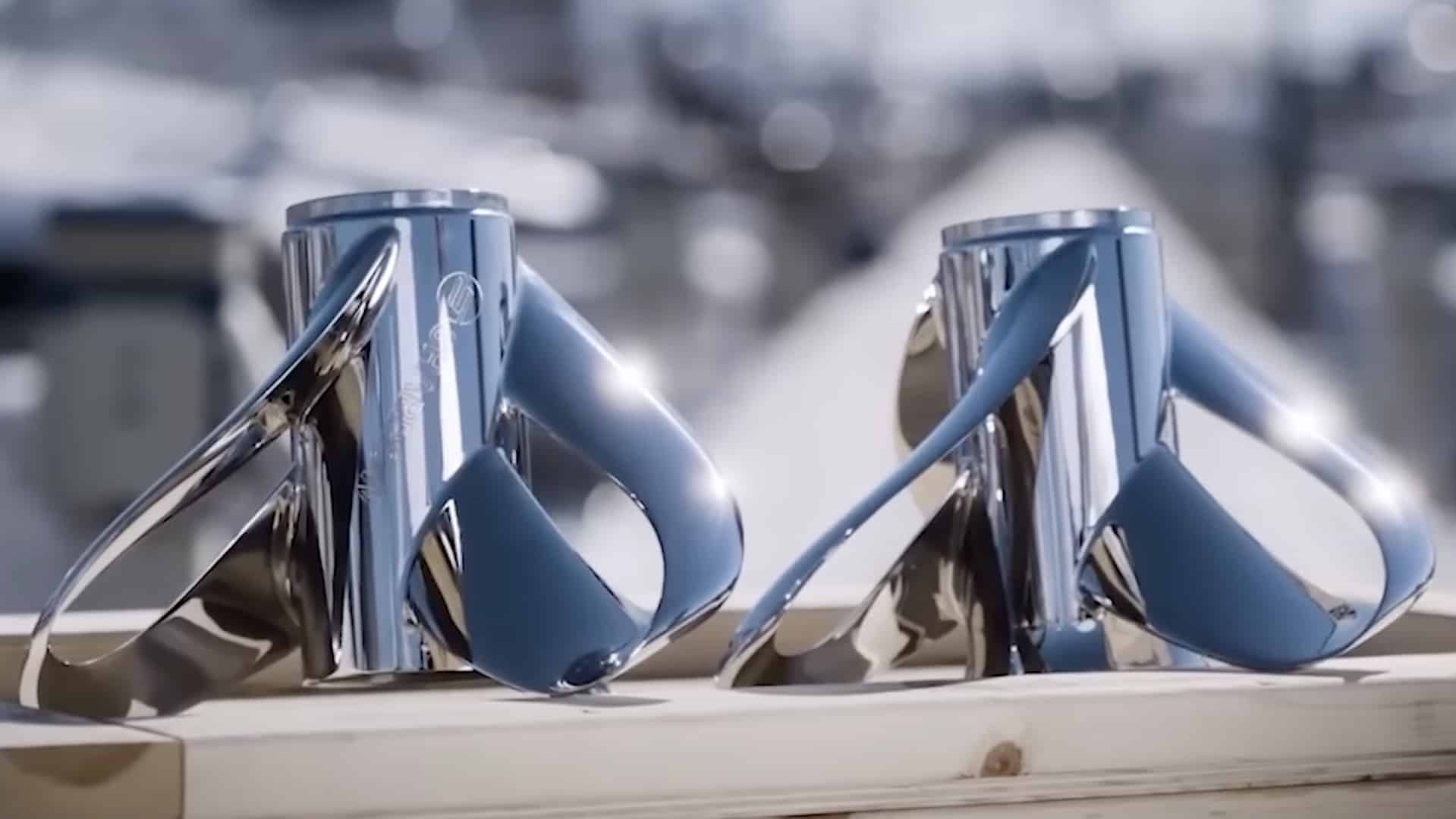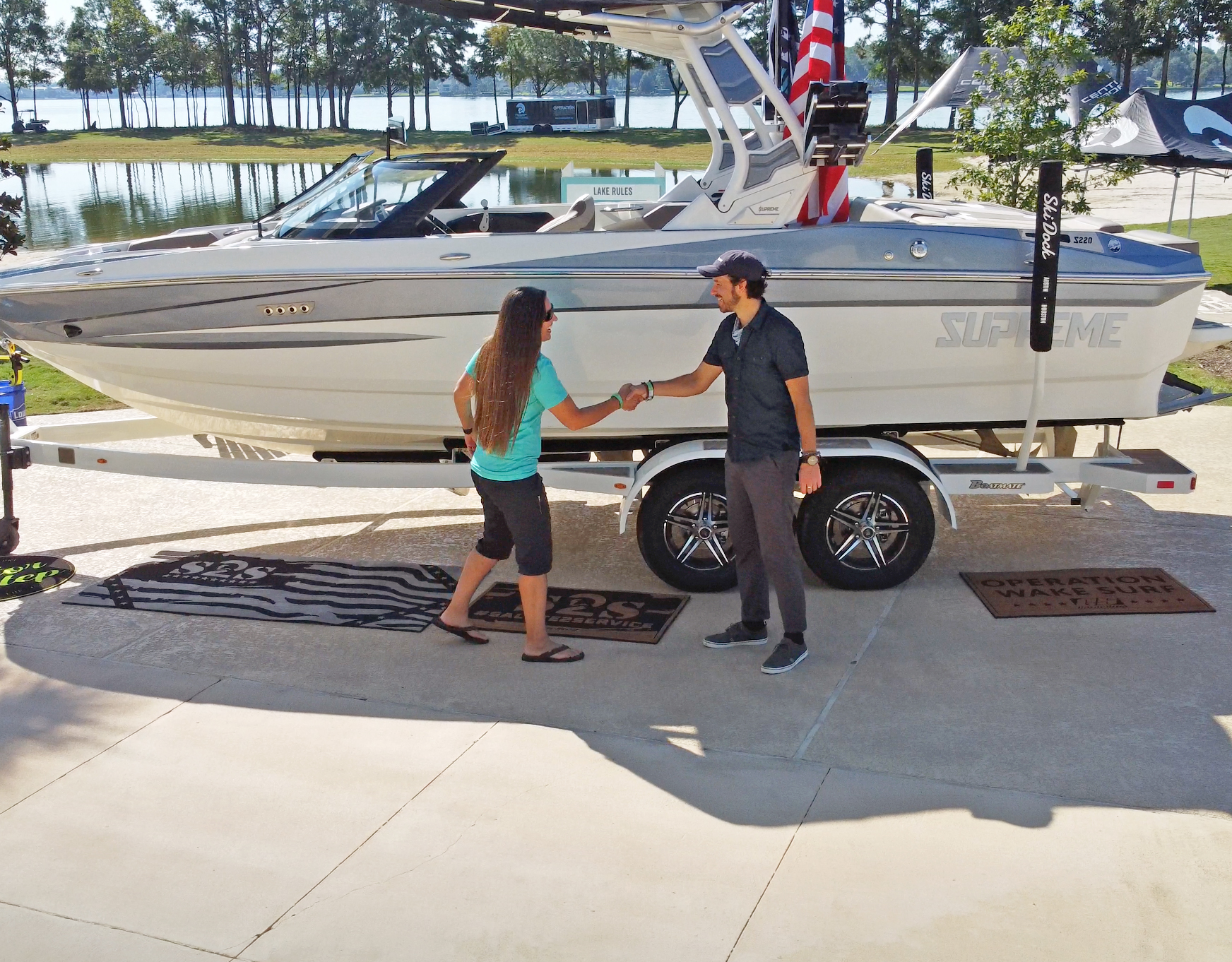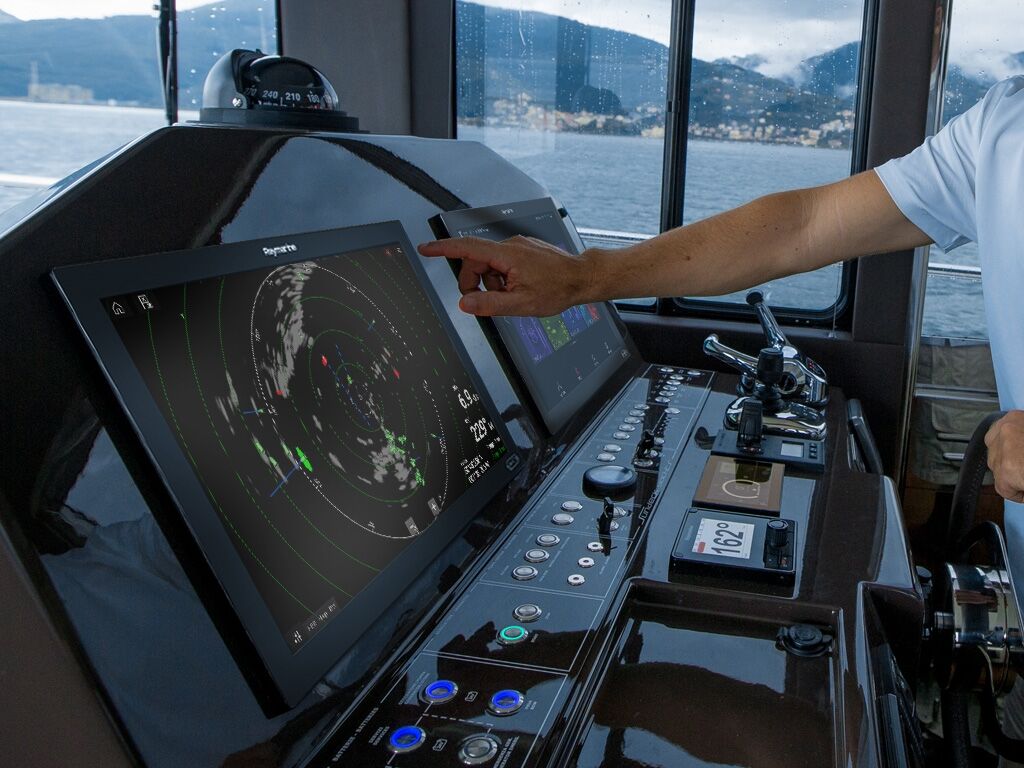Tri Hull Boat Models: Specs, Prices, and Competitors Explained
Tri-hull boats, also known as trimarans, have been gaining popularity in the boating world due to their unique design and performance capabilities. These boats come with three hulls, which provide stability, speed, and additional space on the deck compared to traditional monohull boats.
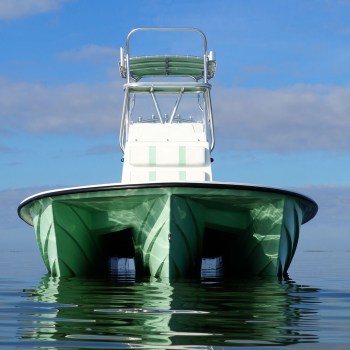
Several manufacturers offer a range of tri-hull boat models designed for different purposes and varying budgets.
As a boating enthusiast, I've noticed an increasing demand for tri-hull boats and have decided to dive deeper into this topic. Throughout my research, I have explored various models, specifications, and price points to understand the key factors that contribute to their performance and how they stack up against their competitors.
From leisurely sailing to high-performance racing, tri-hull boats cater to a wide range of users and preferences.
Key Takeaways
- Tri-hull boats offer stability, speed, and spacious decks due to their three-hull design
- Models and specs vary among manufacturers, catering to different budgets and needs
- Tri-hull boats face competition from other boat types, emphasizing the importance of comparative analysis
Overview of Tri-Hull Boats
History and Evolution
Tri-hull boats emerged in the 1960s as a popular design choice due to their increased stability, more deck space, and smoother ride on the water. They were initially used in smaller recreational boats, but eventually, the design found its way into larger ferries and warships as well 1.
Basic Design and Structure
As the name suggests, a tri-hull boat features three hulls at its base, providing extra stability compared to other designs like monohulls and catamarans.
The main hull runs down the center of the boat, with two sponsons (smaller hulls) on either side, extending all the way to the bow. These sponsons add buoyancy and width at the bow, increasing the interior volume of the boat 2.
In essence, a tri-hull boat combines the best features of a deep V-hull with the stability of a tunnel hull design, making it a versatile choice for various boating needs.
Some popular tri-hull boat models include the Farrier F22 Trimaran, which offers speed, compact size, and high-performance in its various series, such as the F-22, F-22S, and F-22R 3.
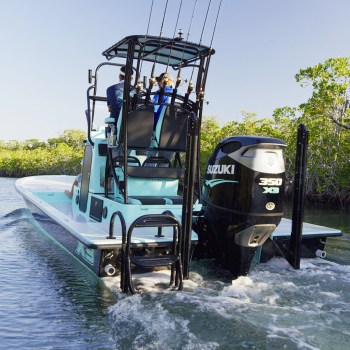
Tri-Hull vs Other Hull Types
When comparing tri-hulls to other hull types, there are a few key differences to consider:
- Stability: Tri-hull boats offer superior stability over monohulls and catamarans due to their three-hull design; this makes them a popular choice for recreation and fishing activities.
- Deck Space: The tri-hull design offers more deck space compared to other hulls, making it easier to accommodate passengers and gear 4.
- Ride Comfort: Thanks to the added buoyancy at the bow, tri-hulls provide a smoother and more comfortable ride on the water, especially in choppy conditions.
- Speed: While not as fast as some multi-hull designs, tri-hull boats can achieve higher speeds due to their deep V-hull and tunnel hull characteristics.
Footnotes
Design and Specifications
Hull Design and Materials
The tri-hull boat design features three hulls: a central hull with two outer hulls called sponsons.
Commonly made from fiberglass, these boats offer a unique combination of stability, buoyancy, and good performance.
The use of fiberglass not only adds strength and durability to the hull but also results in a relatively lightweight construction. This allows for better power-to-weight ratio and thus, better overall handling and acceleration capabilities.
Deck and Space Allocation
One of the biggest advantages of tri-hull boats over traditional ones is the extra deck space that the three-hull structure provides.
The wide beam created by the sponsons offers a spacious and stable platform, making these boats an ideal choice for various activities like fishing, cruising, and watersports.
Here are some key features of a tri-hull boat's deck and space allocation:
- Spacious open deck for easy movement
- A wide platform that provides stability in various water conditions
- Ample seating and storage space
- Room for adding fishing, cruising, and watersports accessories
Performance Factors
When it comes to performance, tri-hull boats offer a unique blend of stability, speed, and power.
Their design allows them to maintain a more level position on the water when picking up speed, which reduces drag and optimizes performance.
Here are some main performance factors to consider for tri-hull boats:
- Stability: The three-hull design gives a wide base that aids in keeping the boat stable, even in rough water conditions.
- Speed: Tri-hull boats are generally not as fast as comparable monohull boats; however, they still provide decent speed levels for various activities.
- Weight: The use of fiberglass in hull construction results in a lightweight boat, thereby increasing the overall power-to-weight ratio.
- Sailing: Tri-hull sailboats like trimarans provide a stable sailing experience even in stronger winds due to their inherent design.
- Power: Due to a more level position on the water, tri-hull boats require less power to maintain their speed.
Types of Tri-Hull Boats
Recreational Tri-Hulls
Recreational tri-hull boats are perfect for those who enjoy spending time on the water with family and friends. These boats offer plenty of space for seating, storage, and activities.
Tri-hull pontoon boats are a popular choice for recreational boating due to their stability and spacious decks.
Another option is tri-hull deck boats, which can comfortably accommodate larger groups. These boats are designed for a smooth, stable ride and are great for cruising or water sports.
Fishing Tri-Hulls
For anglers, fishing tri-hull boats are a practical choice. These boats have the extra stability of a tri-hull design, making them ideal for fishing on lakes, rivers, and even coastal waters.
Bass boats, in particular, are popular tri-hull fishing boats, providing a stable platform with ample storage for fishing gear and increased deck space. This design allows fishermen to move around the boat easily while casting and retrieving their lines.
High-Performance Tri-Hulls
For those seeking speed and excitement, high-performance tri-hull boats are the way to go.
One example is the Farrier F22 Trimaran, a versatile, compact sailboat that comes in three series: the F-22, F-22S, and F-22R. These series are categorized as standard, standard premium, and premium models, respectively.
Tri-Hull Boat Models and Specifications
As a fan of tri-hull boats, I appreciate their unique design and stability on the water. Tri-hull boats offer more space and better fuel efficiency compared to similar-sized monohulls.
When it comes to models and specs, there are several notable tri-hull boat options in the market that cater to distinct needs and preferences.
The Farrier F22 Trimaran is a versatile and high-performance boat, available in three series - F-22, F-22S, and F-22R. These are categorized as standard, standard premium, and premium models, respectively. This trimaran is compact and known for its speed, making it an excellent choice for sailing enthusiasts.
One of the popular tri-hull boat manufacturers, Bennington, offers a wide range of pontoon and tritoon boat models. The New 2024 Bennington R Line ranges from 23 to 27 feet in length and 8.5 feet in width.
These boats are highly customizable, with outboard single engine options up to 450 HP, outboard twin engine options up to 600 HP, and an I/O (sterndrive) option up to 430 HP.
Harris Boats is another brand offering stunning tri-hull boat models for 2023. Their Standard package includes two 25" diameter tubes, a full-length keel, reinforced nose cones, rear skin kit, and a 28-gallon fuel tank.
These boats come in varying lengths and are available in different models like Grand Mariner, Solstice, Sunliner, and Cruiser.
A performance-oriented and foldable option is the Corsair Trimaran, which is known for its foldable amas. These boats offer incredible speed and reliability, making them perfect for racing and fast cruising.
Price Analysis
Price Range and Factors
In my research, I found that the price of tri-hull boats can vary significantly based on various factors such as size, model, materials used, and additional features.
For instance, the Farrier F22 Trimaran comes in three series: F-22, F-22S, and F-22R, which the maker categorizes as standard, standard premium, and premium models, respectively.
When it comes to materials, both construction and finishing play a role in determining the price.
Boats made of more advanced materials like fiberglass or carbon fiber tend to be more expensive than those made of aluminum, for example.
Additional features like electronics, sails, and rigging can also impact the final cost.
I also came across the Neel 51 Trimaran, which boasts impressive specifications like a 15.60m (51ft) LOA, 8.9m (29ft 2in) beam, and 1.50m draught. Although the specific price was not mentioned, it's safe to assume that boats like this fall into the higher end of the market.
Cost of Ownership
The overall cost of owning a tri-hull boat goes beyond the initial purchase price. One should also consider the expenses related to maintenance, storage, insurance, and potential repairs due to damage or loss.
- Maintenance: Similar to other boat types, tri-hull boats require regular upkeep, including cleaning, painting, and engine servicing, to ensure their longevity. These costs will depend on factors like boat size, material, and geographic location.
- Storage: Storage options for tri-hull boats include marina slips, dry storage, and mooring, with varying prices based on location and the type of storage chosen.
- Insurance: Boat insurance can help cover potential loss or damage costs. However, the rates will vary depending on the value of the boat, location, and the coverage chosen. To mitigate risk, always remember to adhere to safe boating practices.
- Repairs: Any damage sustained during regular usage or incidents should be factored into the cost of ownership, as repair costs can accumulate over time.
Comparative Assessment
Tri-Hull Boats vs Competitors
When comparing tri-hull boats with other boat types, it is essential to examine the strengths and weaknesses of each.
Tri-hull boats are known for their stability, spaciousness, and shallow draft, making them a popular choice for recreational and fishing activities.
One popular tri-hull boat model is the Farrier F22 Trimaran, which offers speed and versatility.
In contrast, V-hull boats provide better handling and fuel efficiency but may be limited in terms of deck space.
For instance, pontoon boats offer similar stability to tri-hull boats and a spacious deck but may lack the speed performance of V-hull boats or trimarans. However, pontoon boats are generally more comfortable and suitable for leisure activities.
Comparatively, catamarans and trimarans - both under the multi-hull category - share stability and spaciousness advantages with tri-hull boats.
The Neel 51 Trimaran is an excellent example of a three-hulled yacht that competes in the luxury market segment.
Here's a comparison table to help illustrate the key differences:
| Type | Stability | Spaciousness | Speed | Comfort |
|---|---|---|---|---|
| Tri-Hull | High | High | Moderate | Moderate |
| V-Hull | Moderate | Moderate | High | Moderate |
| Pontoon | High | High | Low | High |
| Catamaran | High | High | Moderate | High |
| Trimaran | High | High | High | High |
Market Positioning
In terms of market positioning, tri-hull boats are generally priced more affordably compared to their multi-hull counterparts like the catamaran or trimaran. This positions them as an attractive choice for budget-conscious buyers looking for stability and space.
Outside of recreational boating, tri-hull boats are popular among anglers, as their stability and spaciousness enable them to carry more equipment and provide a steady platform for fishing.
However, in the luxury market, catamarans and trimarans generally dominate, with options like the Leopard 42 catamaran offering more affordable options and the Neel 51 Trimaran targeting the high-end market segment.
Usage and Functionality
Cruising and Watersports
In my opinion, tri-hull boats are an excellent choice for recreational usage. Their unique design offers more space on the deck than other boats, which is a significant advantage for family outings, fishing trips, and watersports.
The added stability provided by the three hulls also ensures a more comfortable ride, especially for those new to boating.
Top models for these activities include the versatile Farrier F22 Trimaran, which comes in three series: the F-22, F-22S, and F-22R, catering to various preferences and budgets.
One notable aspect of the tri-hull boat is how it planes on the water, lifting the bow out and making the ride smoother. This feature provides a stable platform for fishing and watersports, particularly when you need to be at a standstill or maneuvering at lower speeds.
Commercial and Industrial Use
I have observed that tri-hull boats are not just limited to leisure activities but can also serve commercial and industrial purposes. In fact, these boats are often utilized as ferries in regions like Southeast Asia. Their stability and shallow draft make them well-suited for navigating shallow waters and carrying passengers.
Moreover, various navies around the world have tri-hull warships. These boats offer numerous advantages, including increased speed, reduced hull drag, and a more stable platform for weaponry and crew operations. For instance, the Leopard 42 is a popular tri-hull commercial vessel with impressive specifications, including an LOA of 12.67m, a beam of 7.04m, and a draft of 1.4m.
Advantages and Disadvantages
Performance in Various Waters
A significant advantage of tri-hull boats is their stability in various water conditions. The three hulls at the bottom of the boat provide a wider base, offering excellent balance, especially in choppy waters. However, this design may also result in a wet ride when facing large swells or rough waves, as the wide shape tends to cause water to splash up onto the deck.
In calm waters, tri-hull boats perform quite well, offering a smooth and stable experience for recreational boating, fishing, or water sports. This is primarily due to the center hull, which helps to lift the boat up on a plane, keeping it level as it moves across the water's surface. Nevertheless, tri-hull boats might struggle more in rough, turbulent waters, where their broad profile can lead to decreased agility and increased wobbling.
Comfort and Handling
The unique design of tri-hull boats maximizes the deck space available, making them great options for on-deck socializing, parties, or group activities. The wide beam and three hulls also contribute to a comfortable ride with minimal tilting or rocking, allowing passengers to move around with ease.
Handling-wise, tri-hull boats are generally easy to maneuver, especially at low speeds. However, as with any boat, handling will vary depending on the specific model and its features.
Tri-hull boats tend to have a shallower draft than other types of boats, meaning they can navigate shallow waters more easily. This benefit is most apparent when beaching the boat or maneuvering around tight spots near the shoreline.
On the flip side, when traveling at high speeds, these boats can experience some loss of stability and may struggle to maintain a smooth ride. Due to their wide design, tri-hull boats may have a larger turning radius than other types of boats, such as monohulls or catamarans. As a result, they might not be the best choice for those who prioritize agile handling and responsive control in extremely rough waters.
Innovations and Future Trends
As an avid follower of marine engineering and design, I see several advancements shaping the future of tri-hull boats. Trimarans are becoming increasingly popular due to their unique design, offering greater buoyancy and stability compared to mono-hulls. Innovations in folding systems, hull designs, and flotation materials have made these boats more versatile and appealing to boating enthusiasts.
A key innovation in the tri-hull boat industry is the development of efficient and user-friendly folding systems like those found in the Farrier F22 trimaran. These systems enable the boat to be easily trailered and stored, which is highly convenient for boat owners with limited space.
New hull designs for trimarans, such as flat hulls and tunnels, continue to gain traction as they improve the overall performance and stability of the boat. Tri-hull boats with flat-bottomed outer hulls provide added stability for the vessel and enhance its lifting capabilities on the water surface. Additionally, the tunnels created by the tri-hull design help reduce drag, which leads to increased fuel efficiency and speed.
The use of innovative flotation materials is another aspect that will shape the future of tri-hull boats. Lightweight materials with greater buoyancy are continuously being developed to improve the performance and reduce the overall weight of these boats, as seen in the Neel 51 Trimaran.
Frequently Asked Questions
What are the specifications and price ranges for popular tri-hull boat models?
Popular tri-hull boat models, such as the Farrier F22 Trimaran, come in different series like the F-22, F-22S, and F-22R. These models vary in terms of specifications, with some focused on compactness while others boast high performance. The price range for tri-hull boats can vary significantly depending on the model, size, and features, but generally, they can range from around $20,000 to well over $100,000.
How do tri-hull boats compare with other boat designs in terms of performance and stability?
Tri-hull boats are known for their improved stability, buoyancy, and larger deck space compared to monohulls and catamarans. This is due to their unique design, which features three hulls. The increased width at the bow provides a smoother ride in choppy waters. However, when it comes to speed, tri-hull boats may be slightly slower than their counterparts.
What are the leading manufacturers of tri-hull boats and how do their models differ?
There are several leading manufacturers of tri-hull boats, each offering unique models with different features, designs, and performance levels. Some of the top companies include Farrier Marine, Boston Whaler, and Grady-White. While each manufacturer offers a variety of models, they all focus on providing boats that cater to different boating needs, such as fishing, cruising, or water sports.
Can you list some current market competitors to tri-hull boats?
Tri-hull boats face market competition from other boat designs, such as monohulls, catamarans, and pontoon boats. Each of these alternative designs offers different advantages and drawbacks. For example, monohulls provide better handling in rough waters, while catamarans offer increased speed and fuel efficiency. Pontoon boats, on the other hand, are built for stability and comfort but may lack the speed of tri-hull designs.
How has the tri-hull boat market evolved over the past few years?
The tri-hull boat market has undergone various changes over the past few years, driven by advancements in marine technology and shifting consumer preferences. Advances in hydrodynamic design and construction materials have led to improvements in the performance and fuel efficiency of tri-hull boats. Moreover, manufacturers have also been focusing on incorporating features that cater to consumers' increasing demands for comfort and safety.
What should be considered when purchasing a used tri-hull boat?
When purchasing a used tri-hull boat, there are several factors to consider.
Some of the critical aspects include the boat's overall condition, inspection of the hulls for signs of damage or wear, engine performance, and the condition of the electronics and equipment on board.
Additionally, you should verify the boat's maintenance history, ensuring the previous owner has well-maintained and cared for it.
Charlie is Editor-in-Chief of Sea Magazine

